Are you ready to embark on a delicious culinary journey?
In my “Grilling Techniques and Tips” guide, we’ll delve into the art of grilling and examine several methods that enhance the flavor of your food.
Let’s light the grill and improve your outdoor cooking skills;
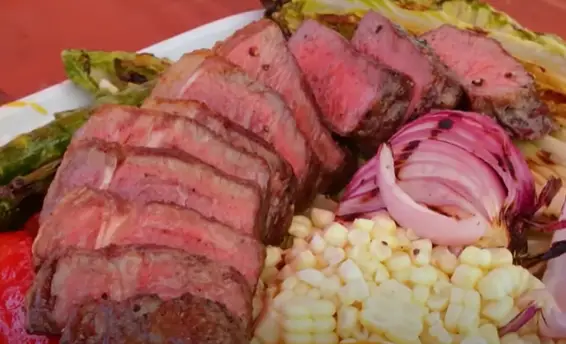
Reccommended Reading:
– Guide to the Best Outdoor Cooking Equipment

# Grilling Methods
The art of grilling includes a range of techniques, each of which is suitable for a certain meal and the desired result.
Let’s explore direct grilling and indirect grilling methods, which are the two most basic grilling methods.
Direct Grilling:
Direct grilling is the most popular grilling technique.
In this method, your food is placed directly over the flame or heat source.
For quick-cooking foods like burgers, steaks, and skewers, it works great.
Here are a few tips for improving direct grilling:
- Preheat your grill: When starting to cook, be sure to preheat your grill.Grill marks ensure that your food is cooked evenly. Furthermore, preheating lessens sticking.
- Oil the grates: Spray oil on the grill grates before adding food to stop food from sticking to them.
- Get the grill marks: Getting the appropriate grill marks not only looks excellent but also adds flavor. To get those clean lines, place your meal at an angle to the grates; don’t move it until it’s time to flip.
- Consistent heat: To ensure consistent cooking, try to maintain a steady heat. Move the food all over the grill if you notice hotspots.
Indirect Grilling:
Indirect grilling is all about slower, more controlled cooking. It’s the technique of choice for larger cuts of meat, whole poultry, and delicate items like fish.
Here’s what you need to know:
- Two-Zone Setup: To set up for indirect grilling, light only one side of your grill and leave the other side unlit. This creates two cooking zones: one with direct heat and one without.
- Low and Slow: Indirect grilling often involves lower temperatures and longer cooking times. This method is perfect for achieving that fall-off-the-bone tenderness for ribs or creating a perfectly roasted chicken.
- Using a Drip Pan: When grilling indirectly, place a drip pan under the food. This not only catches drippings but also helps to maintain a moist cooking environment.
- Adding Smoke: If you want to infuse your food with a smoky flavor, consider adding wood chips or chunks to the lit side of the grill. The smoke will circulate around the food, giving it that irresistible smokiness.
By mastering both direct and indirect grilling techniques, you’ll be equipped to tackle a wide range of recipes and satisfy the cravings of every grilling enthusiast. So, fire up your grill and get ready to become a grilling maestro.
# Preparing the Grill
- Clean the Grates: Start with a clean grill by scrubbing the grates with a grill brush to remove any residue.
- Oil the Grates: Use a paper towel or cloth dipped in vegetable oil to rub the grates thoroughly, ensuring every part is coated.
- Heat the Grill: Light the grill and let it heat up for 15-20 minutes. The heat helps set the oil, creating a non-stick surface.
- Repeat If Necessary: For new or heavily used grates, you may need to repeat the seasoning process a few times.
Choosing the Right Grill:
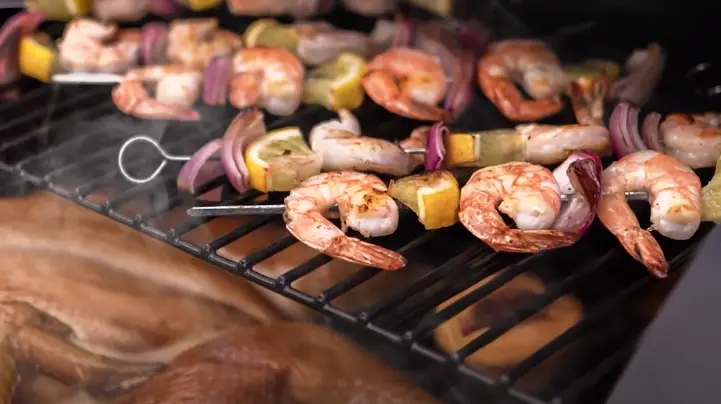
How to Choose:
- Your choice depends on personal preferences.
- Charcoal for smoky flavor and control.
- Gas for convenience and consistency.
- Electric for compactness and ease of use.
Charcoal Grills:
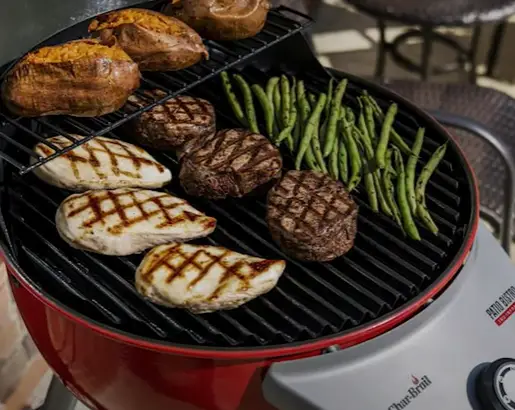
- Flavor Enthusiasts: Charcoal grills are known for imparting that classic smoky flavor to your food. If you’re a flavor aficionado, this might be your top pick.
- Versatility: You have full control over the heat by adjusting the amount of charcoal used.
- High Heat: Charcoal grills can reach high temperatures, perfect for searing steaks.
Gas Grills:
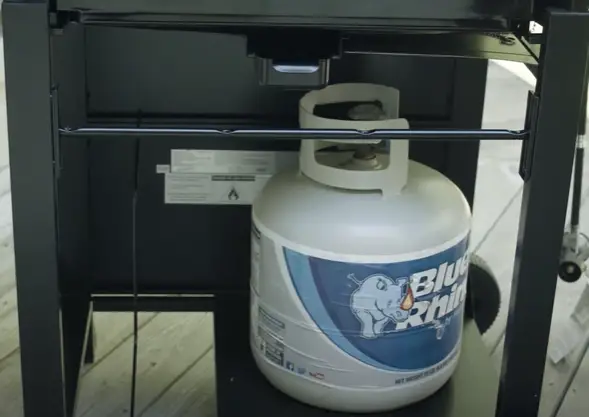
- Convenience: Gas grills offer convenience with quick and easy ignition, precise temperature control, and no ash cleanup.
- Consistent Heat: You can maintain a consistent temperature for longer cooking times.
- Ideal for Beginners: If you’re new to grilling, a gas grill might be the friendliest option.
Electric Grills:
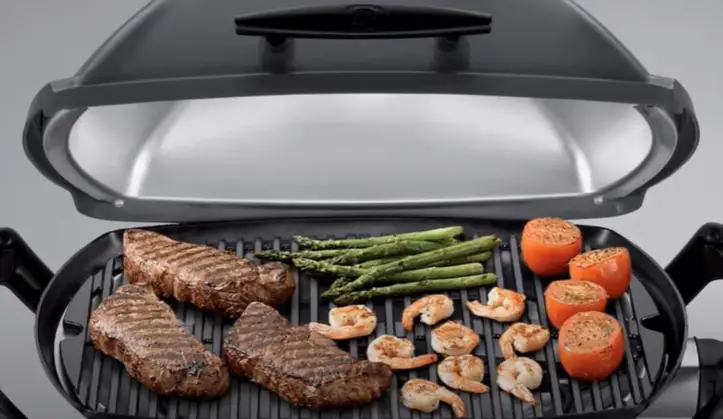
- Compact and Portable: Electric grills are typically smaller and great for those with limited outdoor space or restrictions.
- Ease of Use: Plug it in, and you’re ready to grill. No need to deal with fuel or ignition.
Seasoning the Grill Grates
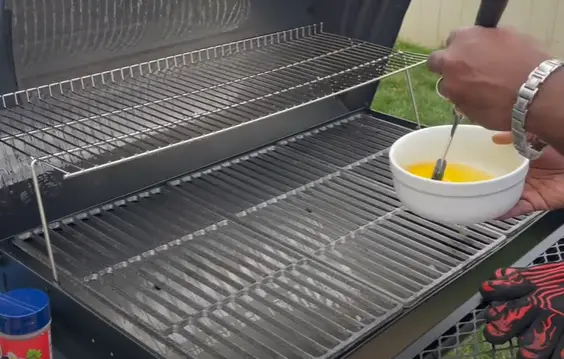
Importance of Seasoning:
- Prevents Sticking: Seasoning creates a non-stick surface on grill grates, reducing the chances of food sticking during cooking.
- Enhances Flavor: It imparts a subtle flavor to your food, enhancing the overall taste of grilled dishes.
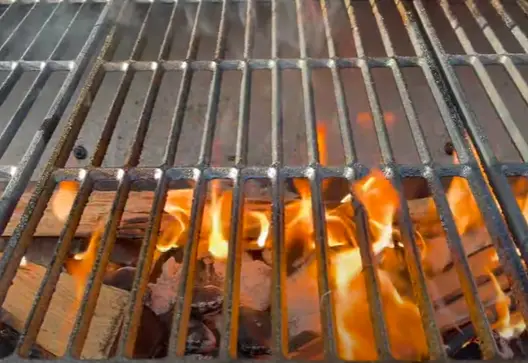
Step-by-Step Guide to Seasoning Grill Grates:
- Clean the Grates: Start with clean, cool grill grates. Remove any debris or leftover food particles using a grill brush or scraper.
- Preheat the Grill: Light the grill and set it to a medium-high heat. Allow it to heat up for about 15-20 minutes. This will burn off any remaining residue.
- Oil Application: Dip a paper towel or a cloth in vegetable oil or any high-smoke-point oil (like canola or grapeseed oil). Be sure it’s not dripping but well-saturated.
- Rub the Grates: Using long tongs, hold the oiled towel or cloth and rub it evenly across the grates. Make sure to cover the entire surface, including the sides.
- Let It Smoke: As you apply the oil, you’ll notice some smoke. This is normal and indicates that the oil is bonding to the metal.
- Repeat If Needed: For new grates or ones that haven’t been seasoned before, you might need to repeat the process a few times to build up a good non-stick layer.
- Cool Down: Turn off the grill and allow it to cool completely. The seasoned grates are now ready for cooking.
# Meat Selection and Preparation
Choosing the Best Cuts:
- Consider Thickness: Opt for cuts of meat with consistent thickness to ensure even cooking.
- Marbling Matters: Look for meat with good marbling (small streaks of fat within the muscle) as it adds flavor and juiciness.
- Bone-In vs. Boneless: Bone-in cuts often have more flavor, but boneless cuts cook more evenly.
Marinating and Seasoning:
- Plan Ahead: Marinate meat for at least 30 minutes before grilling, but longer is often better for flavor absorption.
- Balanced Marinade: Create a balanced marinade with acid (like citrus or vinegar), oil, and seasonings for maximum flavor.
- Season Generously: Season meat with salt and pepper just before grilling to enhance the natural flavors.
Perfect Grill Marks:
- Preheat Grill: Ensure the grill is preheated to high heat. Clean and oil the grates.
- Don’t Move Too Soon: Place meat on the grill and let it sear without moving it for a few minutes to create grill marks.
- Rotate 45 Degrees: After the first set of grill marks, rotate the meat 45 degrees to achieve a crisscross pattern.
- Flip Once: Flip the meat only once to develop grill marks on the other side.
# Temperature Control
Significance of Temperature Control:
- Temperature management is crucial while grilling to make sure food is cooked securely and consistently. Different meals need to be cooked at various temperatures for the best results.
Guidelines for Indirect vs. Direct Grilling:
- Burgers and steaks are good options for direct grilling since they cook quickly. Put the food right next to the heat source.
- For indirect grilling, larger meat pieces and delicate items like fish are better suited. Here, the food is cooked slowly and under more controlled conditions because it is removed from the heat or flames.
Benefits of Using a Meat Thermometer:
- With the help of a meat thermometer, you can grill food to proper doneness without overcooking it.
- This helps prevent foodborne illnesses by ensuring that meat is cooked to the recommended safe internal temperature.
- A meat thermometer provides consistently delicious and secure dinners by taking the element of uncertainty out of grilling.
# Techniques for Different Foods
Grilling Techniques for Different Foods:
- Steaks: Direct cooking at a high heat is best for steaks. Add salt and pepper, then grill the meat for 4-6 minutes on each side for medium-rare.
- Chicken: Use both direct and indirect grilling to cook chicken. Start cooking at a high temperature for scorching, then reduce it for even cooking..Make sure the interior is 165°F (74°C) or above.
- Seafood: direct grilling is best for seafood, including salmon and prawns..Grill salmon for 4-6 minutes per side and prawns for 2-3 minutes, seasoning with herbs and lemon.
- Vegetables: Indirect grilling is advantageous for vegetables. Grill them until they are soft and have excellent grill marks using olive oil, salt, and pepper.
Cooking Times and Temperatures:
- Use a meat thermometer to check the internal temperature of the meat to ensure that it falls within the permissible parameters.
- Grill vegetables until they are crisp-tender and have the desired grill marks for more taste and appearance.
# Grilling Tips
Marinating and Flavor Enhancement:
- Role of Marinades: The use of marinades enhances flavor, adds moisture, and tenderizes meat by allowing the infusion of the meat with herbs, spices, and other seasonings.
- Effective Marinating: Meats should be marinated for a minimum of 30 minutes and a maximum of several hours in the refrigerator in a sealed bag or container. Avoid over marinating meat since it will turn mushy. To prevent cross-contamination, used marinades should be thrown away.
Temperature Control and Zones:
- Two-Zone Grilling: Two-zone grilling is the practice of setting up two separate heat zones on your grill, one for low-heat indirect cooking and the other for high-heat direct cooking. You can cook a range of dishes with this setup, from searing to slow roasting.
- Managing Zones: You may manage temperature zones by adjusting burner parameters or charcoal distribution. You should move the food between zones as needed to cook it precisely.
Checking Doneness:
- Methods for Checking Doneness: Check the color and texture of the meat and use techniques such as pressing to feel the meat to determine how well cooked it is. Even better is using a meat thermometer.
- Importance of Thermometer: The most accurate way to judge doneness is to use a meat thermometer, which offers accurate inside temperatures for different meats.
Grilling Tips for Special Occasions:
- Special Occasions: To accommodate different palates, prepare a variety of grilled dishes in advance for BBQ gatherings, picnics, or special occasions.
- Creative Recipes and Presentation: Make a memorable impression on your guests by grilling inventive dishes like stuffed hamburgers or dessert skewers. To improve your eating experience, pay close attention to your food’s presentation, garnishes, and serving platters.
# Troubleshooting and Common Mistakes
1. Overcooking and Undercooking:
Problem: Meat that is overcooked or undercooked spoils the dish.
Solutions:
- An accurate meat thermometer is helpful while preparing meat.
- To control the cooking process, adjust the grill’s temperature.
- Practice making little cuts to get the timing just right.
2. Flare-Ups:
Problem: Dripping fat flare-ups can result in uneven cooking and safety risks.
Solutions:
- In order to prevent too much accumulation, keep the grill clean.
- Food should be moved away from the fire if flare-ups occur.
- Use a drip pan to catch drips.
3. Uneven Cooking:
Problem: Some food components are cooked more than others.
Solutions:
- Prepare charcoal or burners for two-zone cooking.
- Food should be frequently flipped and rotated.
- Slice the meal into uniform pieces for even cooking.
4. Dry Meat:
Problem: Overcooking could produce tough, dry meat.
Solutions:
- Marinate meat to enhance flavor and add moisture.
- Use a meat injector for a stronger taste infusion.
- Cook until it reaches the desired internal temperature.
5. Over-Smoking:
Problem: An excessive amount of smoke could make the dish bitter.
Solutions:
- Utilize wood chips sparingly.
- Select mild woods for a well-rounded smoky flavor.
- It takes Practice to manage the intensity of smoke.
6. Sticking to the Grill:
Problem: When food sticks to the grates, it might be annoying.
Solutions:
- Clean the grill grates and preheat it.
- For simple release, oil the grates or marinade the food.
- Use the right tools, such as barbecue tongs.
# Frequently Asked Questions
Can I Grill Frozen Meat?
Although it is possible to grill frozen meat, it is not the greatest technique for achieving excellent results.
To cook evenly, it is recommended to place frozen meat in the microwave or refrigerator.
Grilling frozen meat may cause uneven cooking and take longer to cook.
If you must grill frozen meat, cut it into thin pieces or use pre-sliced meat so it cooks thoroughly.
How do I keep food from sticking to the grill grates?
To prevent food from sticking to the grill grates, follow these tips:
- Preheat your grill thoroughly.
- Keep clean and grease the grates before use.
- Use oil or a nonstick cooking spray on the meal.
- Give the food enough time to properly sear before rotating.
- Use a grill brush to clean the grates after each use.
How should we grill tender foods like fish and vegetables?
Grilling delicate foods like fish and vegetables can be tricky but rewarding. Here’s how:
- To prevent vegetables from falling through the grates, place them in a grill basket or foil packets.
- Oil the grates or the meal itself to avoid sticking.
- Grilling fish with the skin on enhances flavor and stability.
- Use indirect heat or a lower temperature when cooking delicate items to avoid overcooking.
Conclusion
This article has covered the fundamental grilling methods and advice for perfecting outdoor cooking.
I urge you to learn more, consider these ideas, and improve your grilling skills..
Happy grilling!
